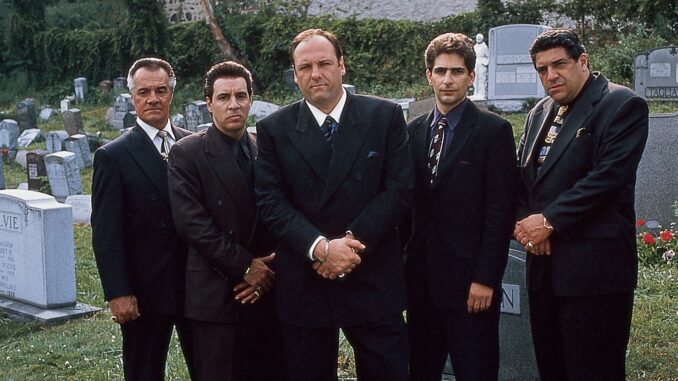
Introduction: The Enduring Legacy of The Sopranos
When we think of groundbreaking television, The Sopranos stands out like a neon sign in a dark alley. This HBO classic redefined the landscape of premium TV with its complex characters and storytelling, primarily revolving around Tony Soprano, brilliantly portrayed by the late James Gandolfini. But what really keeps fans buzzing even after 17 years is the enigmatic series finale, “Made In America.” The infamous cut to black leaves us hanging, much like Tony himself—a fitting end for a character who always played his cards close to the vest.
The Build-Up: A Tapestry of Tension and Intrigue
Layers of Storytelling
From the very first episode, The Sopranos intricately weaves a tapestry of violence, family drama, and psychological struggle. Tony’s character is not just a mob boss; he’s a man grappling with his inner demons. This duality creates a palpable tension that crescendos in the final moments of the series.
Throughout the series, we see Tony evolve, confronting both external threats from rival families and internal turmoil stemming from his complex relationships with his wife, Carmela, his children, and his therapist, Dr. Melfi. Each episode builds on the last, creating a rich narrative filled with hints and foreshadowing that lead us to the series finale.
Foreshadowing in “Made In America”
As the finale unfolds, various elements serve as precursors to the iconic cut to black. Tony’s assassination of Phil Leotardo, the eerie cat encounter, and Junior’s muddled recollections all contribute to an atmosphere ripe with mystery and foreboding. These motifs reflect the chaos that has long been a part of Tony’s life, setting the stage for the ambiguity of the finale.
The moment Tony sits in Holsten’s diner, surrounded by a seemingly mundane scene, is anything but ordinary. The jukebox playing “Don’t Stop Believin’” gives the viewer a false sense of security, while the nameless couple, the suspicious man at the bar, and Meadow’s parking difficulties all inject a layer of tension that leaves us questioning what’s coming next.
The Finale: A Masterclass in Ambiguity
The Cut to Black Explained
The moment Tony Soprano’s world fades to black is a moment that has sparked endless debate. Did he live or die? Was the cut to black a metaphor for the uncertainty of life, particularly in the world of organized crime? Creator David Chase confirmed that killing Tony was always part of the plan, but the specifics of how it would be portrayed were left open-ended until the very end.
By cutting to black just as the tension reaches its peak, Chase masterfully mirrors Tony’s life—filled with uncertainty and danger. This ambiguity allows audiences to project their own interpretations onto the finale, ensuring that discussions around Tony’s fate continue long after the credits roll.
Tony’s Ego and the Legacy of the Cut
Tony Soprano wasn’t just a character; he was an icon of a certain lifestyle, a man who danced with death throughout the series. The decision to leave his fate ambiguous taps into his ego—a man who faced danger head-on without flinching. Tony’s apparent willingness to let his guard down in a diner, surrounded by family and ordinary life, emphasizes his complicated relationship with mortality.
Fans can’t help but reflect on the life Tony lived. The cut to black is a testament to the fact that Tony Soprano will always be alive in the hearts of fans. It leaves us pondering the layers of his character and how they resonate with the complexities of life itself.
The Cultural Impact of the Finale
A Symbol of Modern Storytelling
The cut to black isn’t just a narrative technique; it has become a symbol of modern storytelling. It highlights how storytelling can evoke strong emotions and provoke thought without providing clear answers. This approach has influenced a multitude of series that followed, pushing the boundaries of how stories are told and received.
Fan Theories and Discussions
Even 17 years later, theories about Tony’s fate abound. From Reddit threads to podcasts, fans continue to dissect every detail of that fateful diner scene. Is the man in the members-only jacket a hitman? Is Meadow’s struggle to park foreshadowing her failure to save her father? The layers of interpretation add to the rich fabric of The Sopranos, making it a timeless subject for discussion.
This ongoing conversation has kept the spirit of Tony Soprano alive, allowing new generations to engage with the series. It speaks volumes about the show’s impact that fans are still captivated by its intricacies.
